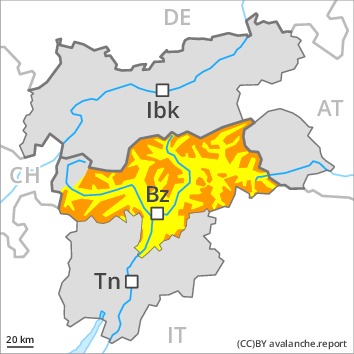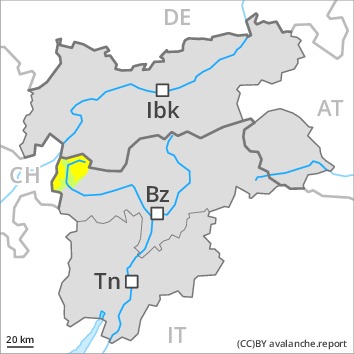
Danger level
 | treeline |
|  |
|  | ||||
|  |
|  |

A treacherous avalanche situation will prevail. Weak layers in the upper part of the snowpack necessitate caution.
Dry avalanches can be triggered in the new snow and wind slab layers and reach quite a large size. Remotely triggered avalanches are possible. Avalanche prone locations for dry avalanches are to be found on steep shady slopes, also below the tree line. The avalanche prone locations are covered with new snow and are barely recognisable, even to the trained eye. Whumpfing sounds and the formation of shooting cracks when stepping on the snowpack serve as an alarm sign.
Fresh wind slabs are small. These avalanche prone locations are to be found in particular adjacent to ridgelines.
As a consequence of solar radiation more dry snow slides and avalanches are possible as the day progresses, even quite large ones.
In addition a latent danger of gliding avalanches exists. Meticulous route selection is recommended.
Snowpack
dp.8: surface hoar blanketed with snow
Faceted weak layers exist in the top section of the snowpack. The more recent wind slabs are lying on surface hoar in some places. As a consequence of low temperatures the snowpack can not consolidate.
Towards its base, the snowpack is well consolidated.
Tendency
A precarious avalanche situation will persist.



